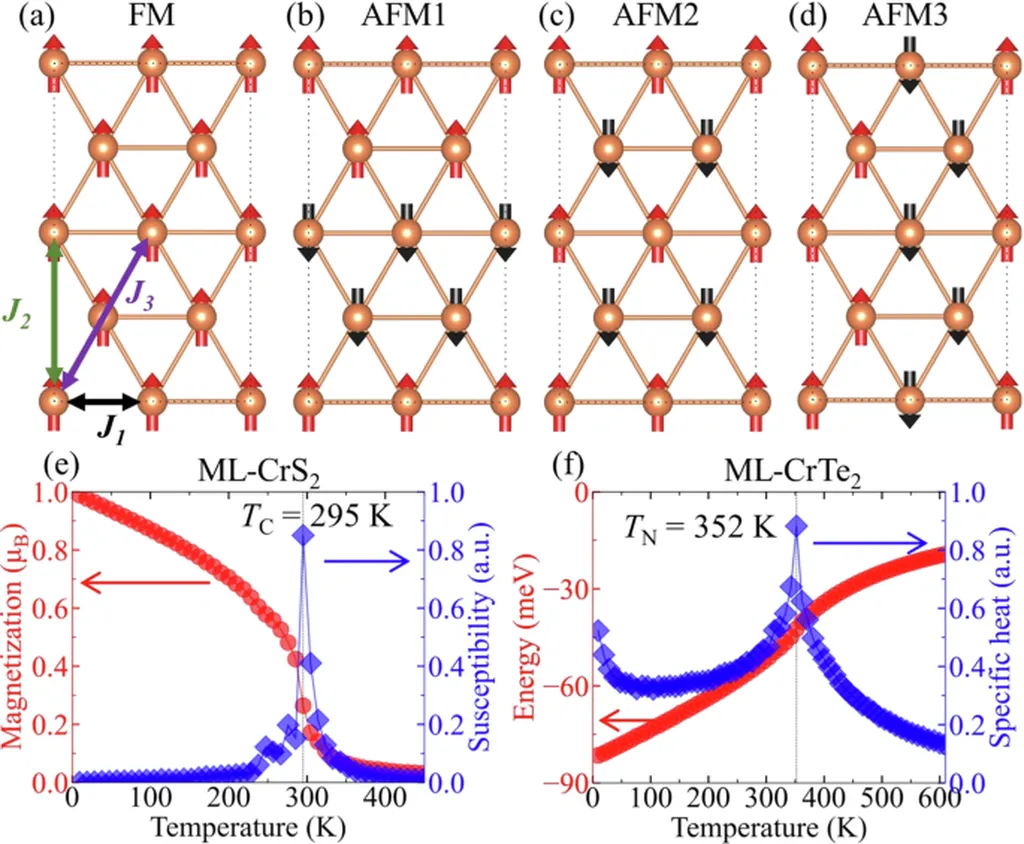In a groundbreaking development that could reshape the landscape of spintronics and energy technologies, researchers have proposed a novel approach to creating high-temperature ferromagnetic semiconductors. This advancement, published in the journal *npj Computational Materials* (translated to *New Journal of Computational Materials*), could have significant implications for the energy sector, particularly in the development of more efficient and powerful electronic devices.
The study, led by Jia-Wen Li of the Kavli Institute for Theoretical Sciences at the University of Chinese Academy of Sciences, focuses on the creation of ferromagnetic semiconductor nanotubes. These nanotubes, derived from monolayer ferromagnetic materials, exhibit high Curie temperatures, a critical factor in the performance of spintronic devices. “Realizing ferromagnetic semiconductors with high Curie temperatures has been a longstanding challenge in spintronics,” Li explained. “Our research proposes a viable pathway to overcome this hurdle.”
The team’s findings reveal that certain MX2 nanotubes, where M represents elements such as vanadium, chromium, manganese, iron, cobalt, or nickel, and X represents sulfur, selenium, or tellurium, exhibit ferromagnetic properties at temperatures above 300 Kelvin (approximately 27°C or 80°F). Notably, CrS2 and CrTe2 zigzag nanotubes with a diameter of 18 unit cells demonstrated particularly high Curie temperatures. This discovery is a significant step forward, as it combines the unique properties of ferromagnetism and semiconductivity in a single material.
One of the most intriguing aspects of this research is the potential for these nanotubes to generate electrical polarization due to the strain gradient in their walls. This polarization, measured at around 0.1 electron volts per angstrom inward of the radial direction, opens up new possibilities for the design and functionality of electronic devices. “The strain gradient in the walls of these nanotubes creates an electrical polarization that could be harnessed for various applications,” Li noted. “This adds another layer of functionality to these materials, making them even more versatile.”
The implications for the energy sector are profound. High-temperature ferromagnetic semiconductors could lead to the development of more efficient and powerful spintronic devices, which use the spin of electrons to process information. This could revolutionize data storage, communication technologies, and energy conversion systems, making them faster, more reliable, and more energy-efficient. “The potential applications are vast,” Li added. “From advanced computing to renewable energy technologies, these materials could play a pivotal role in shaping the future of the energy sector.”
This research not only advances our understanding of ferromagnetic semiconductors but also paves the way for innovative applications in various industries. As the world continues to seek sustainable and efficient energy solutions, the development of high-temperature ferromagnetic semiconducting nanotubes could be a game-changer. The study’s findings, published in *npj Computational Materials*, provide a solid foundation for future research and development in this exciting field.

